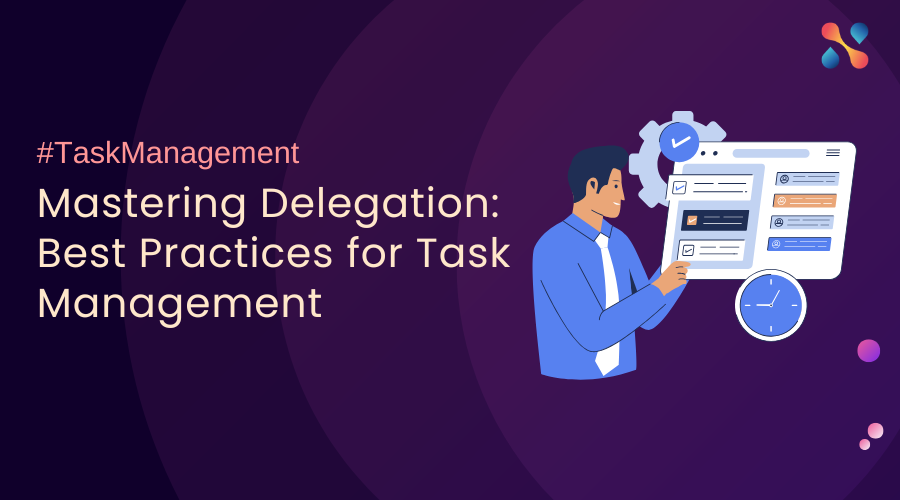Does your workplace have a culture of continuous feedback? We’re guessing not so much if you’re here to research ways that you can implement a feedback culture in your team. Don’t worry, we have all the answers and some practical tips to share below.
The good news is that there are loads of benefits to creating a culture where open dialogue is the norm. And it isn’t hard to do.
If you ask a colleague for an opinion, it’s likely they have one! So making the time to collect feedback (and act on it) is important for showing employees that they are listened to and that their opinion matters. After all, Gallup’s research shows that quiet quitters know what they would change about work. If we could make those changes, what impact would that have on morale and productivity? Probably quite a lot.
However, you can’t implement changes if you don’t know what they are. In this article, we’ll show you how to create a continuous feedback culture with 7 easy-to-implement tips for making it work.
But first, what about the justification for doing it? You know it’s a good idea, but you need to sell it to the rest of the team and management because culture change takes time and also buy-in.
Why is a feedback culture important?
A feedback culture is important because it can help make employees feel recognized and heard at work. In turn, that boosts morale, improves productivity, decreases turnover and generally makes your project-based workplace a nice place to be.
There are also tangible bottom-line results. For example, if goals are understood because there is feedback to and from the management team, teams are more likely to achieve OKRs.
How do you create a continuous feedback culture?
So how do you facilitate ongoing feedback? It’s as simple as being open to hearing what people are saying and asking them to comment.
Here are 7 ways that you can create a continuous feedback culture in your team today.
1. Offer several ways to provide feedback
Feedback can be asked for and received through multiple channels. For example, during OKR discussions and updates, through agile project retros, project status meetings, lessons learned, 1:1 conversations, and formally through a 360-degree employee feedback process.
You might have a formal employee survey once a year, but you can also solicit feedback in informal ways regularly. Offering multiple ways for people to provide their feedback means that you are more likely to get feedback at all!
2. Avoid ‘but…’
When someone offers feedback, listen, acknowledge, and thank them for their contribution. Avoid being defensive and coming up with excuses, justifications, or other reasons why their feedback is not valid. If people feel their feedback is not taken seriously, they will stop offering it.
A simple way to do this is to check what you say in response. If your response was going to start with, “But…” then don’t say it!
3. Make it routine
Build feedback into your processes. Finished a project stage? Do a Retro. Schedule 1:1s with your team so they have a chance to give and get personal feedback. Check-in with project teams to make sure they have the tools and time they need. And if they don’t, work with them to get what they need to do their best work.
Feedback should be timely, so if you are giving it, make sure the recipient hears it in a reasonable timeframe. If you thank someone for a good piece of work they did a month ago, they might have forgotten about it and wonder why you are bringing it up now! Keep feedback as close to the moment as possible. Make feedback feel institutionalized and like normal practice.
4. Make it safe
Make it feel safe to offer feedback, especially if the feedback is going to be difficult for the giver to give. For example, it can be difficult to tell your boss that the process they implemented isn’t effective. You won’t hear that feedback (even if the whole team feels it) if they don’t feel psychologically safe giving it.
If you feel feedback might not be well-received, think about how you can better support the team. Avoid a culture of blame so no one feels like they will be singled out for highlighting areas that are not working well.
5. Use your tools to normalize and streamline feedback collection
Train colleagues and managers on how to use the features of their work management and retro tools so they can automate and streamline the way feedback is collected.
Use the templates within the tools to make it easy to set up feedback sessions and facilitate discussions. Integrating the feedback process naturally leads to a more nuanced understanding of how teams function together. The use of human resource management software allows for a better picture of performance through 360-degree feedback from other teammates and peers. This comprehensive view enriches the feedback by including diverse perspectives, which helps recognize strengths and improvement areas. Such an approach not only fosters a culture of openness and trust but also encourages continuous personal and professional development within the team.
Make use of the tools to collate responses and share the results as well, so everyone can see what was suggested and which priority suggestions will be taken forward.
Don’t forget that as a Scrum Master or team manager you can join in and provide feedback too! Every opinion matters, and yours is no different.
6. Spotlight improvements made as a result of feedback
Getting the feedback is only part of building the culture. People will soon stop offering feedback if nothing happens with it. Sometimes changes are small, like revising the way vacation time is booked so everyone has transparency about who is out of the office – that’s a simple change that would make a big difference and would be relatively easy to implement. When the process is updated, share that with the team so they know their feedback has been acted on.
Other changes might take more time and effort to implement. You can let people know what is happening towards making that improvement so they can see that the intention and action are there. Ideally, you would invite the team to make the change so they own it.
Talk to clients and customers about the changes made as a result of feedback on their projects. Show people that their feedback makes a difference and is acted upon.
7. Walk the talk
Finally, be the kind of team manager who provides feedback and asks for it. Demonstrate the culture in practice, not just in theory.
If you find it hard to remember to offer feedback, put a note in your calendar each quarter to check in, ask for feedback, and review your action plans for those changes that are already in progress. Don’t wait until it’s annual review time to ask a colleague how things are going.
Summary
These simple steps, underpinned by the right tools, will go a long way to making it easy to gather honest feedback over the longer term. Those conversations are the backbone to building your culture of continuous feedback. Without feedback, you can’t pinpoint what improvements will make the most difference, so start small with these tips and see how your team embraces the challenge!








